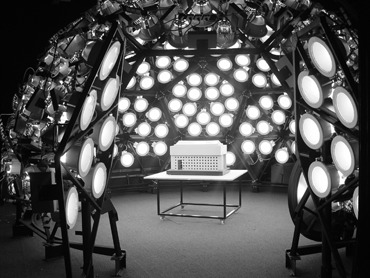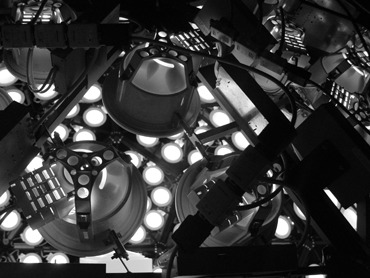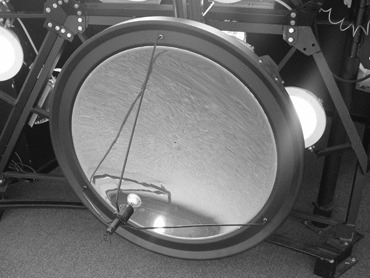The Bartlett Sky Dome
University College London, Thursday 27th October 2011
The Visit
On Thursday 27th October I visited The Bartlett at University College London to see their Artificial Sky. The purpose of the visit was to see the types of facility available and see how it relates to my own project which looks at recreating illumination scenarios to assess the readability of in vehicle displays.
The Bartlett simulates daylight for scale models of buildings to assess the impact of ambient and directional light on lighting design. This is to complement or replace the need for artificial lighting for energy efficiency or to design the lighting within a room for human comfort. It mainly assesses the ratio of indoor and outdoor light and calculates the percentage of daylight entering the space.
The visit has given me an appreciation for the complexity of such systems and the size that would be required to do assessments on full sized vehicles. Investigation into parallax errors and dome size is required.

The Simulator
The Bartlett Artificial Sky is very impressive - a 5m diameter geodesic dome comprising 270 diffused luminaires. It takes approx. 3hrs to calibrate each luminaire and in each case the solid angle needs to be calculated to work out the area of the sky each is responsible for.
Each luminaire is individually addressable by the control system and each setting is calculated based on the luminance distribution required, the solid angle and the performance of the lamp/luminaire. Any sky condition can be generated but they generally used predefined CIE standard skies with the addition of a sun simulator.

The sun is simulated by a 50W halogen lamp reflected by a parabolic mirror which collimates the light into parallel beams. The 'sun' is on a rotatable track which can be programmed to create almost any solar position for time of day/year in the northern or southern hemisphere.

The size of models assessed in the simulator is approximately 1m wide at the base and no more than 0.5m tall. With a model of this size the Bartlett simulator produces parallax errors in the region of 17%. As the model size increases to more then 5:1 (with respect to the size of the dome), the parallax errors become too great to make the simulation viable.
http://www.bartlett.ucl.ac.uk/about-us/facilities
